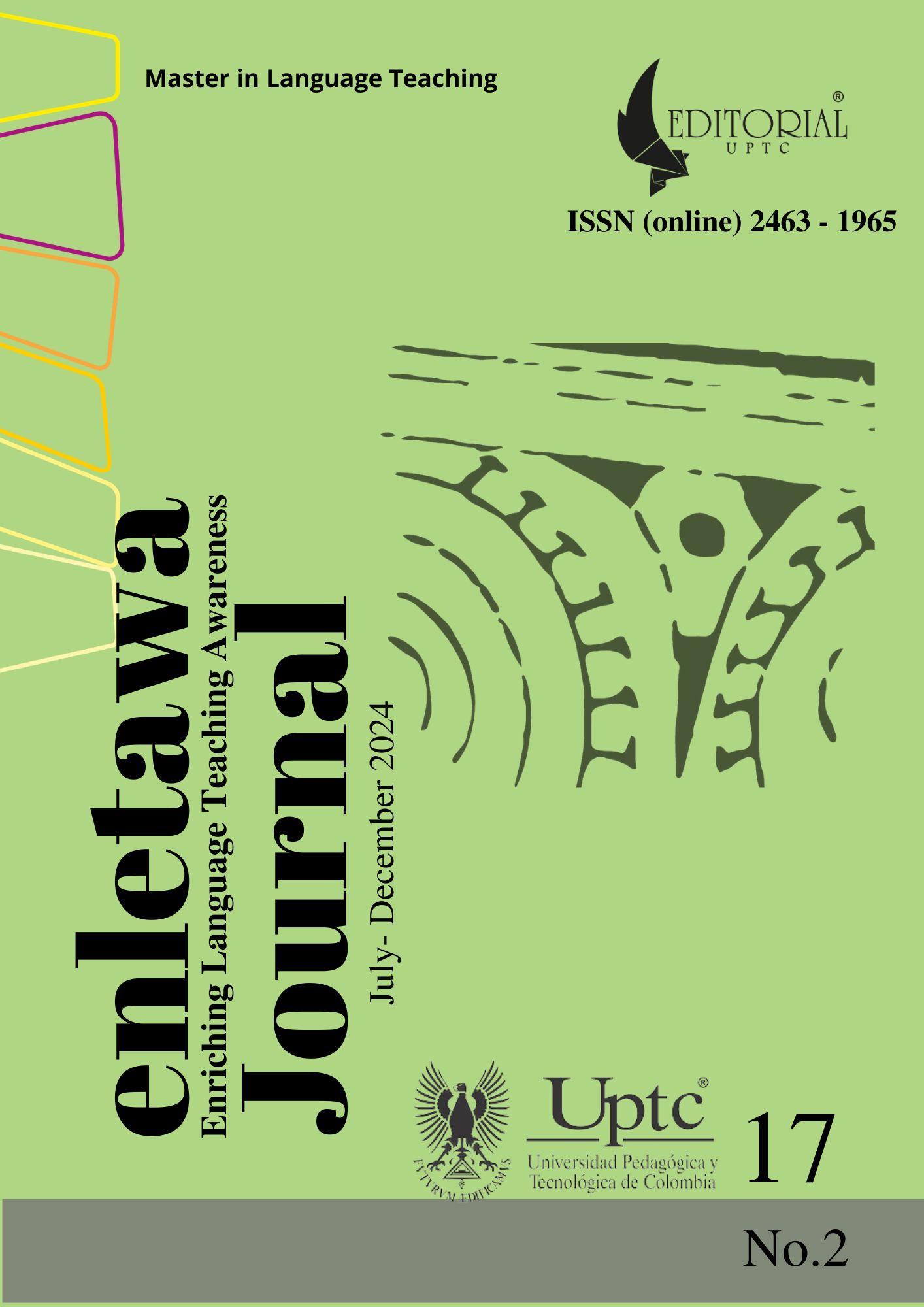I FEEL, THEN I LEARN: The role of emotions in English learning process

Abstract
This article identifies the possible emotions that may be present in students during English learning process and determines the way in which these emotions influence said process. This, through qualitative research with a focus on grounded theory in which participant observation, a written survey and an interview are implemented as a tool for collecting information; the data analysis is carried out under the methods of narrative inquiry, discourse analysis and assertion development. As a result, it stands out that in the participating population there is a greater presence of motivation, curiosity and pride, although there is still fear and stress, since it is completely normal to experience positive and negative emotions at various moments of learning a second language. Among the conclusions, it is highlighted that negative emotions in the classroom affect the comprehension capacity and linguistic skills of learners, since their attention is interrupted by devastating thoughts that demotivate them and impede their learning.
Keywords
Role of Emotions , Positive Emotions, Negative Emotions, Learning Process, Second Language, English
References
- Al Shehri, H. (2012). Los modelos de adquisición y enseñanza en una segunda lengua, y la hipótesis del filtro afectivo de Krashen. Avances en Supervisión Educativa, (16). https://avances.adide.org/index.php/ase/article/view/506/346
- Alvarez, J. A. & Alvarez, T. (2016). La motivación en el aprendizaje del inglés como segunda lengua en los estudiantes de grado 3°. http://hdl.handle.net/20.500.11912/3100
- Anzelin, I.; Marín-Gutiérrez, A. & Chocontá, J. (2020). Relación entre la emoción y los procesos de enseñanza aprendizaje. Sophia, 16, (1). 48-64. http://www.scielo.org.co/pdf/sph/v16n1/1794-8932-sph-16-01-00048.pdf
- Barreras, A. (2004). Vocabulario y edad: pautas para su enseñanza en las clases de Inglés de Educación Primaria. Aula Abierta, (84). 63-84
- Casas, J., Donado, J. & Repullo, J. (2003). La encuesta como técnica de investigación. Elaboración de cuestionarios y tratamiento estadístico de los datos. Atención Primaria, 31 (9). 527-538. https://www.sciencedirect.com/science/article/pii/S0212656703707288
- Goleman, D. (1996). Inteligencia emocional. Kairós. http://www.cutonala.udg.mx/sites/default/files/adjuntos/inteligencia_emocional_daniel_goleman.pdf
- McConnell, M. (2019). Emociones en educación: cómo las emociones, cognición y motivación influyen en el aprendizaje y logro de los estudiantes. Revista Mexicana De Bachillerato a Distancia, 11, (21). https://revistas.unam.mx/index.php/rmbd/article/view/68217
- Mesa, N. y Palma, M. (2022). Incidencia del Estrés en el Aprendizaje del Idioma Inglés: Una visión desde el contexto de los estudiantes universitarios. Polo del Conocimiento. (68), 7. 1693-1704. https://polodelconocimiento.com/ojs/index.php/es/article/download/3889/9025&sa=U&ved=2ahUKEwiGrYDavYaFAxWMmYQIHQtQDRQQFnoECAMQAg&usg=AOvVaw0bcEgbi0dlOW5UMFPFAksr
- Nash G., Crimmins G., Oprescu F. (2016) If first-year students are afraid of public speaking assessments what can teachers do to alleviate such anxiety? Assessment & Evaluation in Higher Education 41(4), 586-600 https://doi.org/10.1080/02602938.2015.1032212
- Orbeta, C. & Bonhomme, A. (2019). Educación y emociones: coordenadas para una teoria vygotskiana de los afectos. Psicologia Escolar e Educacional, (23), e193070. Associação Brasileira de Psicologia Escolar e Educacional (ABRAPEE). https://www.redalyc.org/journal/2823/282362941030/282362941030.pdf
- Orsini C., Binnie V., Wilson S. (2016) Determinants and outcomes of motivation in health professions education: a systematic review based on self-determination theory. Journal of Educational Evaluation for Health Professions (2). 13-19. https://www.semanticscholar.org/paper/Determinants-and-outcomes-of-motivation-in-health-a-Orsini-Binnie/d5b55053b1730592597a154c41fdb8de83e8613e
- Ortega, C. (2024). Análisis de datos de una investigación cualitativa. Questionpro.com https://www.questionpro.com/blog/es/analisis-de-datos-de-una-investigacion-cualitativa/
- Ortega, C. (2024b). Análisis comparativo: Qué es y cómo se realiza. Questionpro.com https://www.questionpro.com/blog/es/analisis-comparativo/
- Pekrun R. (2014). Emotions and Learning. Educational Practices Series. UNESCO. https://unesdoc.unesco.org/ark:/48223/pf0000227679
- Quintero, B.; Bernal, P. & Veitia M. (2021). La afectividad en el proceso de enseñanza-aprendizaje del idioma inglés en el contexto universitario. Revista Cubana de Educación Superior, 40(1), e15. http://scielo.sld.cu/scielo.php?script=sci_arttext&pid=S0257-43142021000100015&lng=es&tlng=es
- Restrepo, E. (2016). Etnografía: Alcances, Técnicas y Éticas. Envión Editores
- Roldán, A. (2018). Obstáculos en el aprendizaje del inglés como lengua extranjera en dos grupos de población bogotana. Universidad Distrital Francisco José de Caldas.
- Saldaña, J. (2011). Fundamentals of Qualitative Research. Oxford University Press https://www.researchgate.net/publication/283986070_Fundamentals_of_Qualitative_Research
- Sampieri, R. H.; Collado, C. F. & Lucio, P. B. (2017). Metodología de la Investigación. McGraw-Hill. https://www.uca.ac.cr/wp-content/uploads/2017/10/Investigacion.pdf
- Tangen, J. L. (2017). Attending to nuanced emotions: Fostering supervisees' emotional awareness and complexity. Counselor Education and Supervision, 56(1), 65–78. https://doi.org/10.1002/ceas.12060
- Van Dijk, T. (2000). El discurso como estructura y proceso. Gedisa.
- Timoštšuk I.; Kikas E. & Normak, N. (2016). Student teachers’ emotional teaching experiences in relation to different teaching methods. Educational Studies, 42 (3), 269-286 http://dx.doi.org/10.1080/03055698.2016.1167674
- Urhahne D. (2015). Teacher behavior as a mediator of the relationship between teacher judgment and students’ motivation and emotion. Teaching and Teacher Education (45). 73-82. http://dx.doi.org/10.1016/j.tate.2014.09.006
